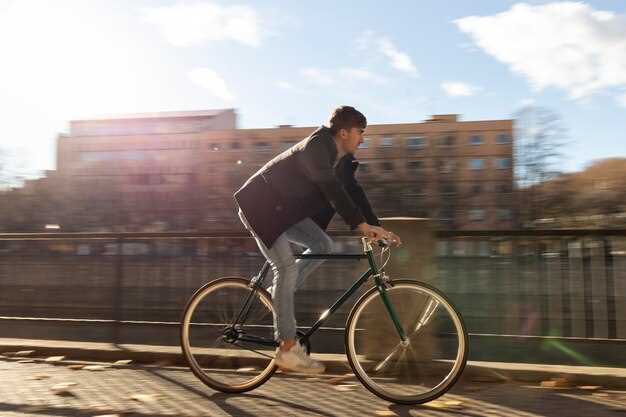
Improving your performance on the track requires a combination of skill, strategy, and a keen understanding of your equipment. Whether you are a seasoned cyclist or just starting, the quest for speed is universal. This article aims to provide you with essential tips to reduce lap times on your track bike, ensuring you gain a competitive edge in your cycling endeavors.
Every second counts on the track, and even the smallest change can lead to significant improvements in your overall speed. Mastering your technique and optimizing your bike’s setup are crucial steps toward achieving your time goals. By implementing these recommended strategies, you will find yourself not only becoming a faster rider but also enhancing your overall enjoyment of the sport.
As you prepare to tackle the track, remember that the journey to improved lap times is a process. It requires consistent effort, dedication, and a willingness to learn from both successes and failures. With the right approach and mindset, you can unlock your full potential and maximize your performance on the bike.
Optimize Your Aerodynamic Position
To improve your lap times on the track, one of the most effective strategies is to optimize your aerodynamic position on the bike. Reducing drag can significantly enhance your speed and overall performance. Here are some crucial tips to achieve the best aerodynamic posture:
- Lower Your Upper Body: Bend your elbows and lower your torso to minimize exposure to wind resistance. A flat back creates a streamlined silhouette.
- Adjust Your Hand Position: Utilize the drops or aero bars to create a more aggressive stance. This position reduces air resistance as you cut through the wind.
- Head and Neck Alignment: Keep your head low and in line with your spine. Avoid lifting your head unnecessarily, as even slight movements can create additional drag.
- Leg Positioning: Maintain a smooth and efficient pedal stroke. Proper leg alignment helps in maintaining balance and rhythm, contributing to an overall aerodynamic profile.
In addition to these tips, consider the following strategies:
- Fit Your Bike Correctly: A proper bike fit ensures that your position is not only aerodynamic but also sustainable over long rides.
- Practice Regularly: Spend time experimenting with different positions during training sessions. Find what feels comfortable while maximizing speed.
- Use Aerodynamic Gear: Invest in aero helmets, skin suits, and other gear designed to improve airflow around your body.
By focusing on these aerodynamic adjustments, you can effectively reduce your lap times on the track and enhance your competitive edge.
Adjust Gear Ratios for Better Acceleration

Adjusting gear ratios is a crucial factor in optimizing your track bike’s acceleration and overall speed. The right gear ratio allows you to effectively transfer your pedal power to the wheels, enabling faster starts and improved responsiveness on the track.
To enhance acceleration, consider using a lower gear ratio, which simplifies the pedaling effort required to reach higher speeds quickly. This setup allows you to accelerate faster, especially during sprints or when exiting corners. A lower gear ratio means you can spin your pedals faster, providing an immediate boost in speed while maintaining control over the bike.
On the other hand, a higher gear ratio can be beneficial for maintaining speed on flat sections of the track. However, it may hinder your ability to accelerate quickly from a standstill or when navigating tight turns. Therefore, finding the right balance is essential based on the specific track conditions and your riding style.
Experimenting with different combinations of chainrings and sprockets will help you determine the most effective gear ratio for your bike. Pay attention to how each adjustment impacts your acceleration and make notes on which setups yield the best results during practice sessions. Ultimately, the right gear ratio can significantly reduce your lap times by improving your acceleration, allowing you to power out of corners and maintain momentum across the track.
Tune Your Tires for Maximum Grip
To achieve optimal speed on your track bike, it is crucial to tune your tires effectively. The right tire setup can significantly enhance your grip, allowing you to maintain control during high-speed turns and accelerations. Here are some essential tips for maximizing tire performance:
1. Select the Right Tire Compound: Different tire compounds offer varying levels of grip and durability. Choose a soft compound for track racing to enhance traction, especially in corners. However, consider the trade-off in longevity, as softer tires wear out faster.
2. Monitor Tire Pressure: Tire pressure directly impacts grip and handling. Lowering the pressure increases the tire’s contact patch, providing better grip. Experiment with different pressures, but be cautious, as too low pressure can lead to pinch flats. Aim for a balance that maximizes speed without sacrificing safety.
3. Consider Tire Width: Wider tires can provide superior grip due to a larger contact area with the track. However, ensure compatibility with your bike frame and fork. Test various widths to find the sweet spot that enhances speed without compromising aerodynamics.
4. Tread Patterns Matter: While many track bikes sport slick tires for minimal resistance, the presence of grooves can enhance grip in certain conditions. Choose a tread pattern that fits your riding environment. For track settings, slicks are often the best option, as they maximize contact and reduce drag.
5. Regularly Inspect and Maintain: Keeping tires in top condition is essential for speed. Inspect them for wear and tear, and replace them when necessary. Ensuring proper alignment and avoiding debris can also prolong tire life and maintain performance.
By implementing these tips, you can significantly enhance your bike’s grip, resulting in faster lap times and better overall performance on the track.
Master Cornering Techniques
Improving your cornering skills is essential for reducing lap times on your track bike. Here are some valuable tips to enhance your cornering techniques and increase your speed.
First, focus on your entry speed. Enter corners at a higher speed by practicing proper braking techniques before approaching the turn. Ensure you’re braking in a straight line, as this allows for better stability and control when you lean into the corner.
Next, learn to look ahead. Your line of sight is crucial for navigating corners efficiently. Keep your eyes focused on the exit of the turn rather than looking directly at the ground or your front wheel. This practice helps you anticipate the curve and make smoother transitions.
Body positioning plays a significant role in cornering. Shift your weight to the inside of the bike while leaning into the turn. This technique lowers your center of gravity and enhances grip, allowing you to carry more speed through the corner.
Experiment with different racing lines. Every track has its unique characteristics, and finding the optimal line through a corner can make a significant difference in your lap times. Consider practicing both the inside and outside lines to identify which offers the best speed and control.
Lastly, practice makes perfect. Spend time on the track refining your cornering techniques. Mock practice sessions, where you focus solely on corners, can help you develop muscle memory and confidence. Over time, you’ll notice improvement and reduced lap times.
Utilize Data Analysis for Performance Improvement
To enhance your performance on the track bike, leveraging data analysis can provide invaluable insights. By focusing on key metrics, you can identify areas for improvement and implement targeted strategies to reduce lap times. Here are some essential tips to utilize data effectively.
First, invest in a reliable cycling computer or GPS device that can track your speed, distance, and elevation changes. This data will help you recognize patterns in your performance and understand how different variables affect your speed on the bike.
| Metric | Importance | Action Steps |
|---|---|---|
| Heart Rate | Understanding your effort level. | Monitor your heart rate to find the optimal intensity for speed during laps. |
| Power Output | Assessing your energy efficiency. | Use a power meter to determine how effectively you’re converting energy into speed. |
| Lap Times | Tracking progress over time. | Break down each lap to analyze specific segments for improvement. |
| Cadence | Understanding pedaling efficiency. | Experiment with different cadences to find what maximizes your speed. |
In addition to collecting data, regular analysis is crucial. After each ride, review your metrics to spot trends and anomalies. Compare your performance against previous rides to assess progress and make informed adjustments.
Implementing these strategies will help you use data to streamline your practice sessions. Focus on the elements that have the most significant impact on your speed and refine your techniques accordingly. Over time, consistent attention to data analysis will lead to continuous performance improvement and faster lap times on your track bike.
Incorporate Strength Training for Better Power Output

To enhance your speed on the track, incorporating strength training into your routine is essential. This type of training focuses on building muscle power and endurance, directly influencing your ability to generate force while cycling. Here are some effective tips to maximize your strength workouts:
1. Focus on Compound Movements: Exercises like squats, deadlifts, and bench presses engage multiple muscle groups simultaneously. This not only builds strength but also improves your overall stability and coordination on the bike.
2. Integrate Plyometric Exercises: Incorporate explosive movements such as box jumps and kettlebell swings to enhance your fast-twitch muscle fibers. These can lead to quicker acceleration, which is crucial for achieving lower lap times on the track.
3. Train Specific Muscle Groups: Pay special attention to your legs, core, and upper body. Cyclists benefit from a strong core to maintain posture and a powerful upper body to help with overall cycling efficiency. Targeting these areas will significantly improve your power output.
4. Monitor Your Progress: Keep track of your strength gains by regularly testing your maximum lifts and adjusting your training program accordingly. This ensures that you are continually challenging your muscles, ultimately leading to increased strength and speed.
5. Allow for Recovery: Strength training can be demanding, so it’s vital to incorporate rest days into your schedule. Recovery allows your muscles to rebuild and grow stronger, thus enhancing your power output during rides.
By integrating these strength training strategies into your fitness regimen, you will notice a marked improvement in your performance on the track. Higher power output translates to faster speeds and better lap times, making this approach a game changer for competitive cyclists.






